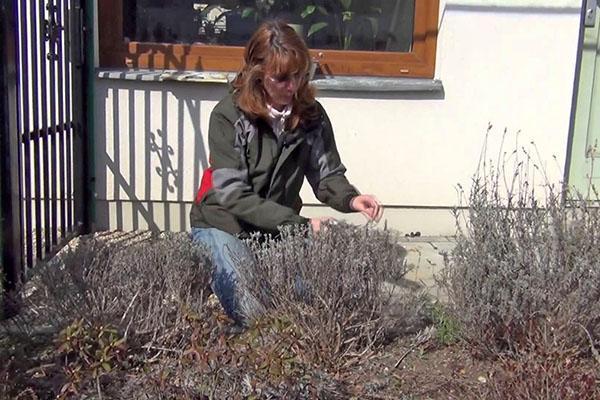Gardener's Barber - Spring Pruning Lavender
 The end of March, the snow begins to gradually melt from the flower bed, and the solar circle rises higher and higher above the horizon. It is for this kind of weather that spring pruning of lavender is intended. It is carried out to rejuvenate the culture, and also to prevent the exposure of its root system. Therefore, all dried branches are completely removed from the bush. They are sometimes simply shortened to a stiff part, because even they are able to start up new growths. It is also recommended to remove the shoots growing to the side or in the middle.
The end of March, the snow begins to gradually melt from the flower bed, and the solar circle rises higher and higher above the horizon. It is for this kind of weather that spring pruning of lavender is intended. It is carried out to rejuvenate the culture, and also to prevent the exposure of its root system. Therefore, all dried branches are completely removed from the bush. They are sometimes simply shortened to a stiff part, because even they are able to start up new growths. It is also recommended to remove the shoots growing to the side or in the middle.
When forming curbs adult specimens do not need to be afraid to cut the stems to nothing. Sensing the heat, the rhizomes release many young and healthy branches.
The Essential Spring Lavender Pruning
After wintering, flower growers are advised to carefully examine the bush. Very thin, but unusually long, branches often remain on it. With strong winds or snowfall (next year), they can break, thereby injuring the plant. These disadvantages of improper preparation of the culture for the winter are easily corrected. If you make a shaping pruning, adjusting the branches to one level, then it will begin to grow with renewed vigor. Some try to shorten it by only one third, others by half. But the spring pruning of lavender in order to create a thick and voluminous crown is done in this way:
- remove dry peduncles located in the upper part;
- then they begin to cut thin and broken shoots;
- remove single stems that are too high above the rest of the mass.
The performed procedure stimulates the growth and development of young kidneys. As a result, the rhizome begins to release thick shoots that have more stable characteristics.
For three-year-old specimens, such a drastic operation will not cause much harm. By this age, they have developed a powerful root system. When branches are injured, it activates its forces to maintain the life of the plant. By drawing out the maximum nutrients from the soil, the culture is easily restored.
additional information
When the top of the plant is cut, it sprouts new growth. In this case, young specimens should be cut very carefully, because they are very weakened. Several buds are laid at the site of the cut, which leads to the formation of a dense / lush crown. If the procedure is not carried out annually, then the herbaceous flower starts to grow, and its stems become woody. For landscape design, such effects create certain difficulties. Why create unnecessary problems for yourself?
In favor of pruning lavender in spring, it is worth adding that it promotes the formation of compact bushes, as well as the development of lush flowering. Regularity in this matter will protect the grower from additional waste and stress.